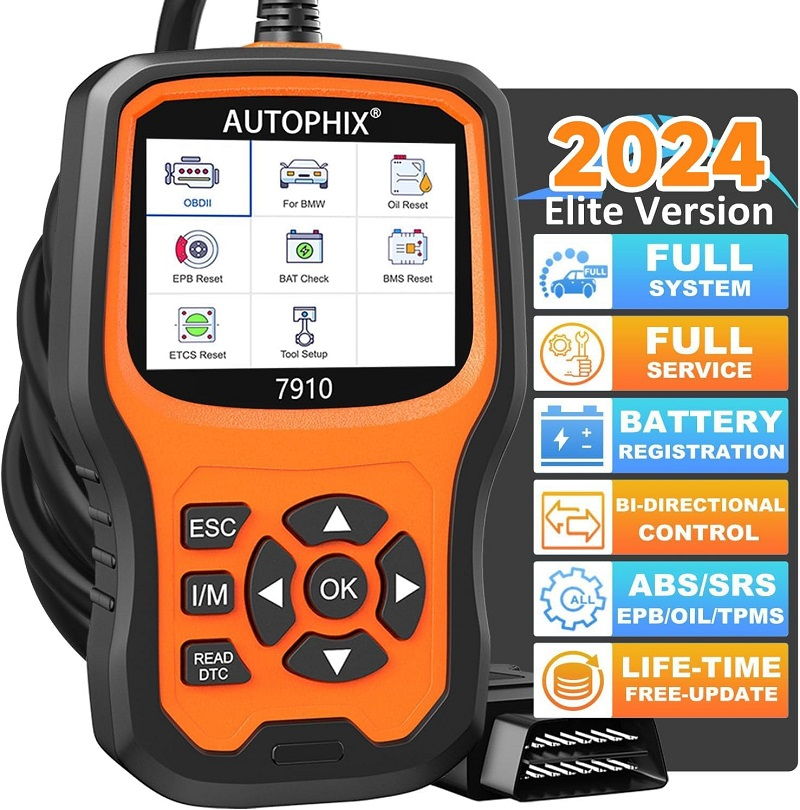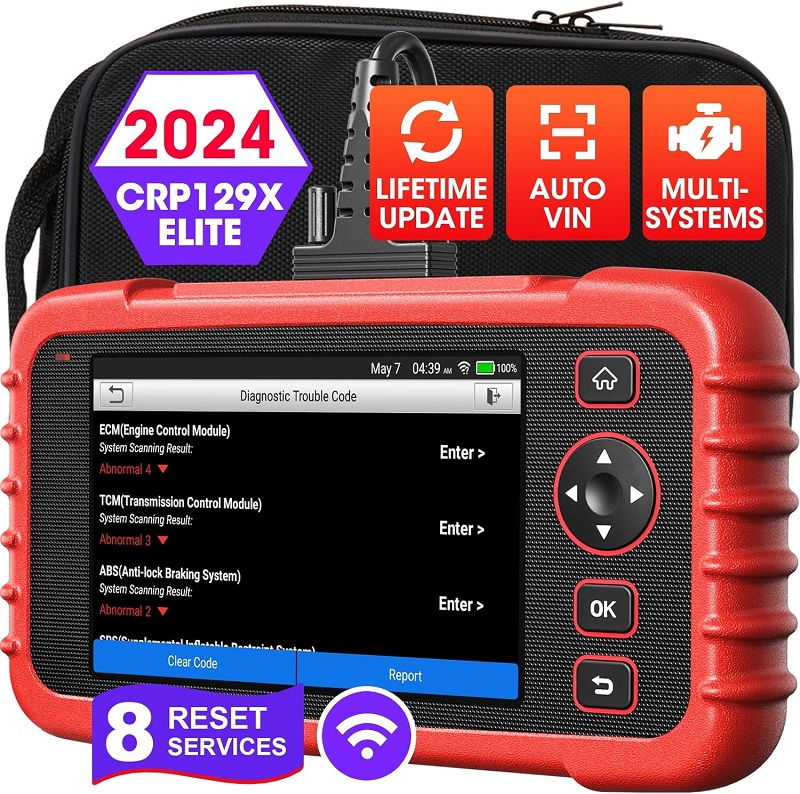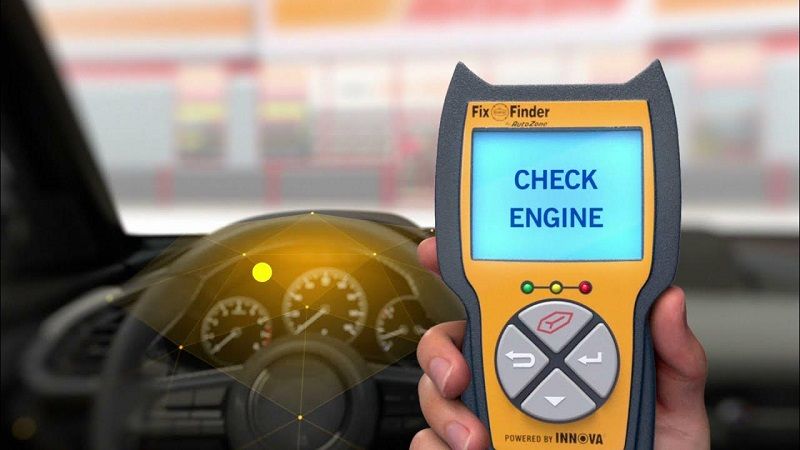This post contains affiliate links. This means I will make a commission at no extra cost to you should you click through and make a purchase [ “As an Amazon Associate, I earn from qualifying purchases.” ]. Read the full disclosure here.
Autozone Check Engine Light GuideMechanic.Com Having the check engine light illuminate on your vehicle’s dashboard can be a cause for concern. It’s a signal that something isn’t quite right and requires immediate attention.
In this comprehensive guide, we will delve into the world of AutoZone check engine light diagnostics, providing you with all the information you need to understand and address this issue.
Throughout this article, we will explore the common causes behind a check engine light, how to use AutoZone’s diagnostic tools to identify the problem, and steps you can take to resolve the issue.
Whether you’re a seasoned car enthusiast or a novice driver, this guide will equip you with the knowledge to navigate the complexities of check engine light diagnosis and repair.
Understanding the Check Engine Light
See Also: Check Engine Light Scanner
The check engine light is a crucial component of your vehicle’s onboard diagnostics system. It acts as a warning mechanism, alerting you to potential issues with your vehicle’s engine or emissions system. When the light illuminates, it’s essential to understand its purpose and the different warning levels it can indicate.
What Does the Check Engine Light Mean?
The check engine light can signify various problems, ranging from minor issues to more severe engine malfunctions. It is crucial to differentiate between a steady light and a flashing one.
A steady light often indicates a less severe problem, while a flashing light suggests a more urgent issue that requires immediate attention.
The Importance of Addressing the Check Engine Light
Ignoring the check engine light can have serious consequences for your vehicle’s performance and long-term reliability. Even if the issue seems minor, it’s best to address it promptly to prevent potential damage or costly repairs down the line.
Additionally, some states require that vehicles pass emissions tests, and a lit check engine light can result in a failed inspection.
Common Causes Behind a Check Engine Light
The check engine light can be triggered by a wide range of issues. Understanding the common causes can help you narrow down the potential problem and determine the necessary steps for resolution.
Loose or Faulty Gas Cap
One of the most common causes of a check engine light is a loose or faulty gas cap. A loose cap can allow fuel vapors to escape, triggering the light. Similarly, a faulty cap can disrupt the proper pressure in the fuel system, leading to an illuminated check engine light.
Malfunctioning Oxygen Sensor
An oxygen sensor measures the amount of oxygen in the exhaust system, providing crucial data for optimal fuel-to-air ratio. A malfunctioning oxygen sensor can lead to reduced fuel efficiency and increased emissions, triggering the check engine light.
Faulty Mass Airflow Sensor
The mass airflow sensor measures the amount of air entering the engine, allowing the engine control unit (ECU) to adjust the fuel injection accordingly. A faulty mass airflow sensor can disrupt this process, leading to engine performance issues and an illuminated check engine light.
Issues with the Catalytic Converter
The catalytic converter plays a vital role in reducing harmful emissions from the exhaust system. If it becomes clogged or fails, it can trigger the check engine light. Addressing catalytic converter issues is crucial not only for the environment but also for the overall performance of your vehicle.
Problematic Ignition Coils or Spark Plugs
Ignition coils and spark plugs are responsible for igniting the fuel-air mixture in the combustion chamber. When these components malfunction or fail, it can lead to misfires, reduced engine performance, and an illuminated check engine light.
AutoZone’s Check Engine Light Diagnostic Tools
Check out this BlueDriver Bluetooth Pro OBDII Scan Tool for iPhone & Android

AutoZone provides a range of diagnostic tools that can help you accurately identify the problem causing your check engine light to illuminate. These tools are designed to be user-friendly and accessible, allowing you to perform diagnostics in the comfort of your own garage.
OBD-II Scanners
An On-Board Diagnostics II (OBD-II) scanner is a valuable tool for check engine light diagnosis. It connects to the vehicle’s onboard computer system and retrieves diagnostic trouble codes (DTCs) associated with the issue. AutoZone offers a variety of OBD-II scanners suitable for different vehicle makes and models.
Code Readers
See Also: Golf Warning Lights Meaning
Code readers are another diagnostic tool offered by AutoZone. These devices are similar to OBD-II scanners but provide a more simplified interface for DIY enthusiasts. Code readers can retrieve and display DTCs, allowing you to understand the problem and take appropriate action.
Check Engine Light Reset Tools
AutoZone also offers check engine light reset tools that allow you to clear the light after resolving the underlying issue. These tools ensure that the light does not continue to illuminate once the problem has been resolved, providing peace of mind and a clean dashboard.
Retrieving and Understanding Diagnostic Trouble Codes
Diagnostic trouble codes (DTCs) are alphanumeric codes that the vehicle’s onboard computer generates to indicate specific issues. Retrieving and understanding these codes is crucial for effectively diagnosing and resolving check engine light problems.
Connecting the OBD-II Scanner
To retrieve DTCs, connect the OBD-II scanner to the vehicle’s diagnostic port, usually located under the dashboard. Follow the instructions provided with the scanner to establish a connection and retrieve the codes stored in the vehicle’s computer.
Decoding the Diagnostic Trouble Codes
Once you have retrieved the DTCs, you’ll need to decode them to understand the underlying problem. AutoZone provides a comprehensive database of DTC definitions, allowing you to search for the specific code and its associated meaning. Understanding the codes will help you determine the necessary repairs or maintenance.
Considering Freeze Frame Data
Freeze frame data provides additional information about the circumstances when the check engine light was triggered. It includes parameters such as vehicle speed, engine RPM, and coolant temperature at the time of the fault. Analyzing freeze frame data can provide valuable insights into the cause of the issue.
Addressing Common Check Engine Light Issues

While the check engine light can be a cause for concern, many issues can be addressed with simple maintenance tasks or minor repairs. In this section, we’ll discuss some common check engine light issues and provide guidance on resolving them effectively.
Tightening or Replacing the Gas Cap
If a loose or faulty gas cap is the culprit behind the check engine light, the solution is as simple as tightening the cap or replacing it if necessary. Ensure that the cap clicks into place securely to maintain proper fuel system pressure.
Replacing Oxygen Sensors
When an oxygen sensor malfunctions, it’s advisable to replace it to restore optimal fuel efficiency and reduce emissions. AutoZone offers a wide range of oxygen sensors compatible with various vehicle makes and models. Follow the manufacturer’s instructions and consult AutoZone’s resources for guidance during the replacement process.
Cleaning or Replacing the Mass Airflow Sensor
If the mass airflow sensor is causing the check engine light to illuminate, it may be possible to resolve the issue by cleaning the sensor. However, in some cases, a replacement may be necessary. Consult the vehicle’s service manual or AutoZone’s resources to determine the appropriate course of action.
Inspecting and Replacing the Catalytic Converter
Catalytic converter issues often require professional attention, as they can be complex to diagnose and repair. However, you can visually inspect the converter for signs of damage or clogging. If necessary, consult a certified mechanic to assess the condition of the catalytic converter and recommend the appropriate repairs or replacement.
Replacing Ignition Coils or Spark Plugs
When ignition coils or spark plugs fail, they can cause misfires, reduced performance, and an illuminated check engine light. Depending on the vehicle’s make and model, replacing these components can vary in complexity. Consider consulting AutoZone’s resources or seeking professional assistance for a smooth and effective replacement process.
Preventive Measures to Avoid Check Engine Light Problems
Prevention is always better than cure when it comes to check engine light issues. By implementing preventive measures, you can minimize the likelihood of the light illuminating and ensure the long-term health ofyour vehicle. Here are some preventive measures you can take:
Regular Maintenance and Inspections
Schedule regular maintenance appointments and inspections to catch potential issues before they escalate. This includes oil changes, filter replacements, and fluid checks. Following the manufacturer’s recommended maintenance schedule can help prevent check engine light problems.
Replacing Worn-Out Components
Keep an eye on the condition of your vehicle’s components and replace any that show signs of wear or damage. This includes belts, hoses, and other engine parts. By addressing worn-out components promptly, you can prevent them from causing more significant issues and triggering the check engine light.
Proper Fueling Habits
See Also: Engine Emission Warning
Ensure you’re using the correct fuel type specified by your vehicle’s manufacturer. Using the wrong fuel can lead to engine problems and trigger the check engine light. Additionally, avoid overfilling your gas tank, as this can cause fuel to enter the emission control system and lead to issues.
Safe Driving Practices
Practicing safe driving habits can help prevent check engine light problems. Avoid aggressive driving, excessive idling, and sudden acceleration or braking. By driving responsibly, you reduce the strain on your vehicle’s engine and decrease the likelihood of triggering the check engine light.
The Importance of Clearing the Check Engine Light

Once you’ve identified and resolved the issue triggering the check engine light, it’s essential to clear the light to ensure proper functioning of your vehicle’s onboard diagnostics system.
Resetting the Check Engine Light
To reset the check engine light, you can use AutoZone’s check engine light reset tools. These tools allow you to clear the light without the need for professional assistance. Follow the instructions provided with the tool to safely reset the light and ensure it does not continue to illuminate.
Verification of Repairs
After clearing the check engine light, it’s advisable to verify that the repair was successful. Take your vehicle for a test drive and monitor for any recurring issues or warning lights. If the check engine light reappears, it may indicate that the problem was not fully resolved or that there is another underlying issue that needs attention.
Frequently Asked Questions About AutoZone Check Engine Light
Here are some frequently asked questions regarding AutoZone’s check engine light diagnostics:
1. How do I know if my check engine light issue is serious?
The severity of a check engine light issue can vary. If the light is flashing, it indicates a more urgent problem that requires immediate attention. A steady light suggests a less severe issue, but it’s still important to address it promptly to prevent further damage.
2. Can AutoZone diagnose the specific problem causing my check engine light to illuminate?
AutoZone’s diagnostic tools can retrieve diagnostic trouble codes (DTCs) associated with the check engine light. These codes provide information about the specific problem. However, diagnosing the exact cause may require further investigation or professional assistance.
3. Can I drive my vehicle with the check engine light on?
It’s generally safe to drive your vehicle with the check engine light on, especially if it’s steady. However, it’s advisable to address the issue as soon as possible to prevent potential damage and ensure optimal vehicle performance. Consult AutoZone’s resources or a certified mechanic for guidance.
4. Can a check engine light issue affect my vehicle’s fuel efficiency?
Yes, certain check engine light issues, such as malfunctioning oxygen sensors or mass airflow sensors, can impact fuel efficiency. Resolving these issues can help restore optimal fuel economy and save you money in the long run.
5. How often should I check my vehicle’s diagnostic trouble codes?
It’s a good practice to periodically check your vehicle’s diagnostic trouble codes, even if the check engine light is not illuminated. Regular checks can help identify potential issues early on, allowing you to address them before they worsen.
Staying Informed: Keeping Up with Check Engine Light Technology
As automotive technology continues to evolve, so does the check engine light diagnostic process. It’s essential to stay informed about the latest advancements to effectively diagnose and resolve check engine light issues.
Industry Updates and Resources
Stay updated with industry news, manufacturer updates, and resources provided by AutoZone. These sources can provide valuable information about new diagnostic techniques, emerging technologies, and best practices for check engine light diagnosis and repair.
Continued Learning
Consider expanding your knowledge through online courses, workshops, or forums dedicated to automotive diagnostics. Engaging with fellow enthusiasts, professionals, and experts can provide insights into the latest trends and techniques for check engine light diagnostics.
See Also: Exclamation Point Dash Light
Utilizing AutoZone’s Resources
AutoZone offers a wealth of resources, including online guides, videos, and forums, to help you navigate check engine light issues. Take advantage of these resources to stay informed and make informed decisions regarding your vehicle’s diagnostics and repairs.
In conclusion, the check engine light can be a source of anxiety for many vehicle owners. However, armed with the knowledge provided in this comprehensive guide, you can confidently address and resolve check engine light issues using AutoZone’s diagnostic tools and resources.
Remember, proper maintenance, prompt diagnostics, and timely repairs are key to keeping your vehicle in optimal condition. By understanding the common causes behind a check engine light and utilizing the right tools, you can effectively tackle any issues that arise, ensuring a smooth and worry-free driving experience.
Related video of AutoZone Check Engine Light: Everything You Need to Know
- P008C Fuel Cooler Pump Control Circuit Open - November 4, 2024
- P008D Fuel Cooler Pump Control Circuit Low - October 30, 2024
- P008E Fuel Cooler Pump Control Circuit High - October 26, 2024

